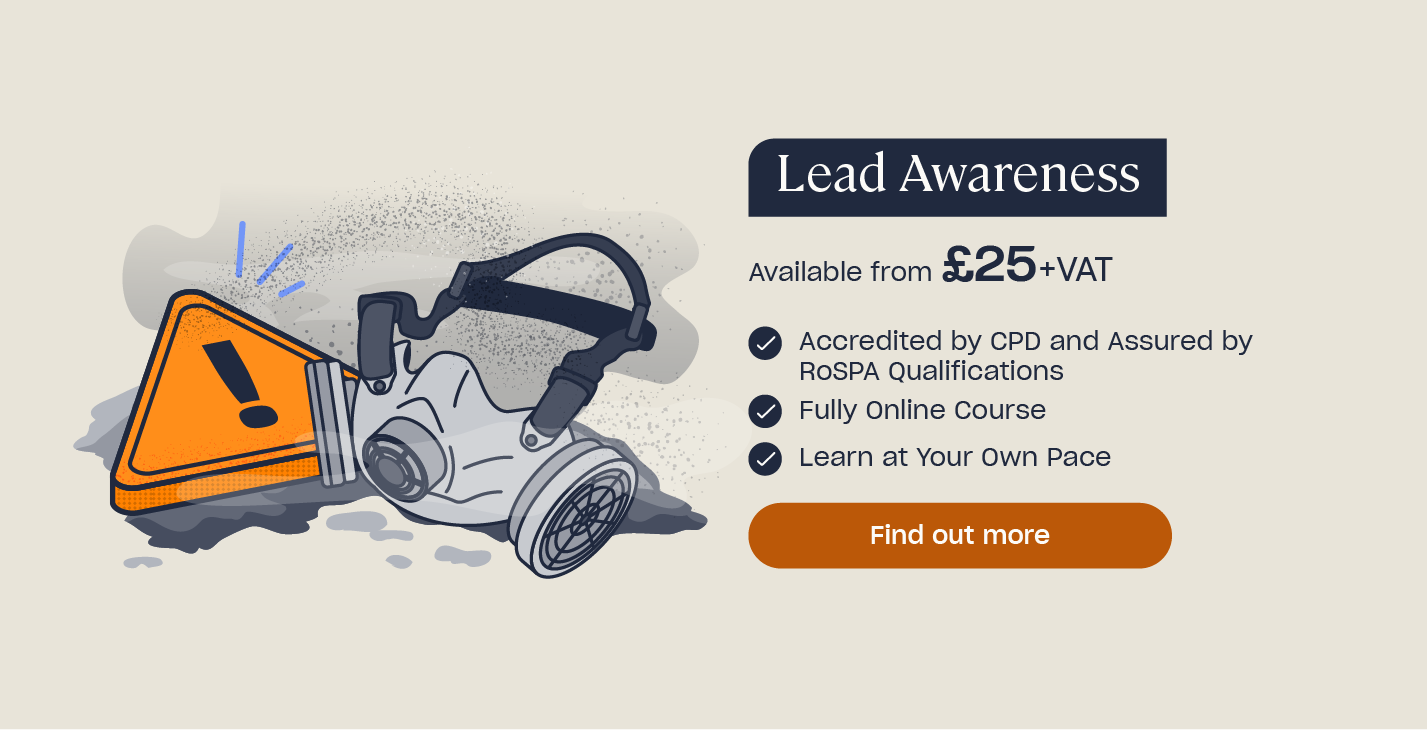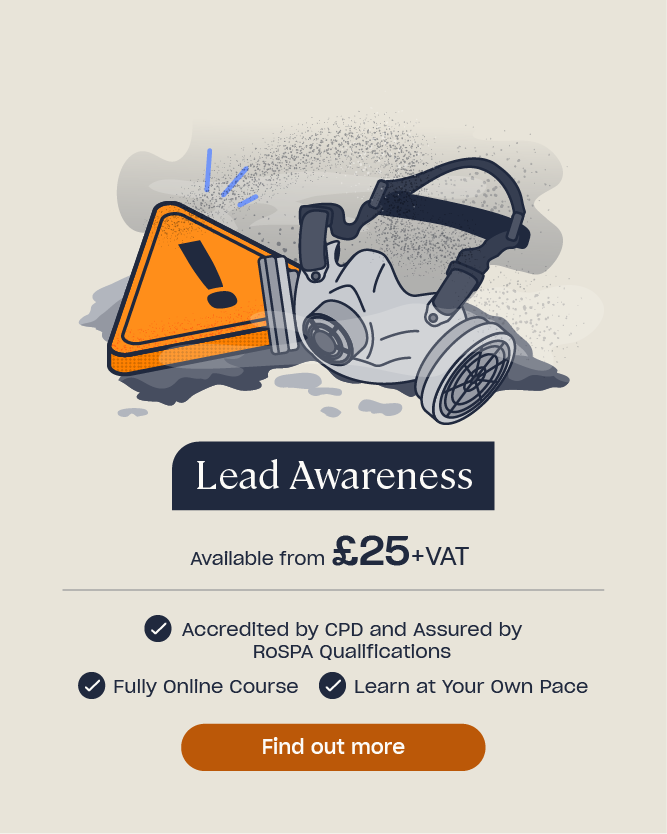How to Conduct a Working with Lead Risk Assessment
Lead is present in many environments: from children’s toys and jewellery to paintwork and pipes. These lead particles can spread and, as a result, can be found in the air, soil, and water. Whilst lead is a naturally occurring element, frequent and long-term exposure is extremely damaging to your health. Indeed, the HSE reports that there are around 4,500 lead workers under medical surveillance in Great Britain alone.
For this reason, everyone who works with lead must know the risks associated with their work and the methods to reduce them. This article outlines how to develop a working with lead risk assessment and provides you with a blank template that you can use for your own workplace.

Who Needs a Lead Risk Assessment?
Under the Control of Lead at Work Regulations 2002, employers have a duty to prevent employee exposure to lead. However, if prevention is not possible, such as because of the work activity, employers have a duty to control this exposure. A lead risk assessment can help you do this.
If you are self-employed and you face frequent lead exposure as part of your work, it’s your own responsibility to implement control measures to protect yourself.
It’s the role of the competent person to conduct the risk assessment. This is somebody who is trained in the process of conducting risk assessments and is able to identify hazards. They must be knowledgeable and suitably trained in the dangers of lead and the appropriate risk prevention methods. This may be you, as an employer, or a specialist.
Lead exposure is a particular concern in certain industries:
- Smelting, refining, alloying, and casting.
- Lead battery manufacture.
- Work with metallic lead and lead containing alloys.
- Paint removal.
- Glass making – including cutting and etching.
Aside from these industries, lead is also present in particular items, such as in certain types of pottery, toys, jewellery, and pipes and plumbing materials. If you work with or around these items frequently, then you are also at risk.
Need a Course?
Our Lead Awareness Training explains where you may encounter lead when working and the correct working procedures you should adopt to protect your health. It also outlines the responsibilities that employers have if their workplace and work activities involve employee exposure to lead.
The Main Steps of a Lead Risk Assessment
Conducting a lead risk assessment is essential to protect the health of your employees and yourself. All risk assessments have five primary steps:
- Identify the risks to health.
- Recognise who may be harmed by the risks and how they will be harmed.
- Identify the precautions needed to remove or reduce the risks.
- Record the findings and precautions, and implement them.
- Review and update the risk assessment frequently.
Step 1: Identify the Risks to Health
The competent person is responsible for identifying what the risks are. They should:
- Visit the workplace.
- Visually look for any hazards.
- Speak to employees.
- Identify the tasks that require work with lead.
- Consult any previous risk assessments or tests.
Step 2: Recognise Who May be Harmed and How
After identifying the risks to health, the competent person needs to decide who is most at risk from the identified hazards. These people could be employees or members of the public who are nearby.
They should also identify how people will be harmed. This involves looking at the work activities and identifying which present a risk of harm, and to who. For example, an employee removing lead paint from a building will be at risk from inhaling and ingesting the lead particles. A member of the public nearby may also be at risk of this.

Step 3: Identify the Precautions Needed
The competent person is also responsible for selecting the controls needed to eliminate the risks or, where this isn’t possible, to reduce them to as low a level as possible.
Examples of precautions include changing the work method, providing PPE and RPE, and separating the work area.
Step 4: Record the Assessment and Implement the Precautions
The competent person needs record all steps of the risk assessment, either manually on paper or electronically. This includes the identified hazards, who the hazards may affect, and the control measures to reduce them.
When you’ve implemented the precautions, it’s important that you communicate them to all employees. Everyone who is at risk must understand the hazards present, the methods needed to reduce the level of risk, and what they can do to protect their health.
Your risk assessment should be available on the premises for employees to consult.
Step 5: Review and Update the Assessment
The risk assessment is valid until something on the premises changes. For example, a new work activity, a new control measure, employee feedback, or if significant ill-health suggests that something needs to change. If something changes, then the competent person must ensure that they review the risk assessment and update it as appropriate.
Working with Lead Risk Assessment Template
We hope this article is useful in helping you develop your working with lead risk assessment. We’ve produced a free fillable template that you can use for your own workplace. You can fill this in on your computer or print it.
What to Read Next:
- Lead Awareness Training
- What is the Difference Between Hazard and Risk?
- What are the Consequences of Poor Health and Safety Procedures?











